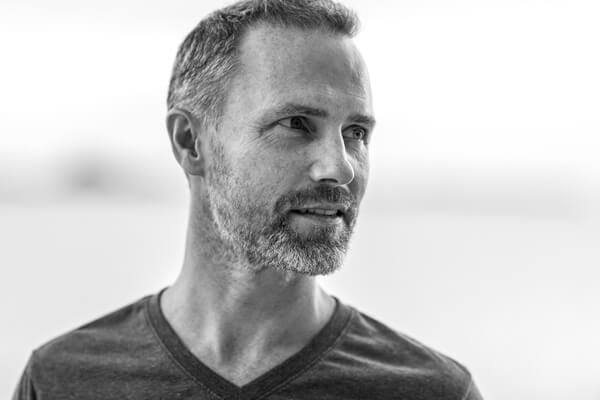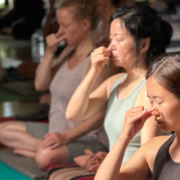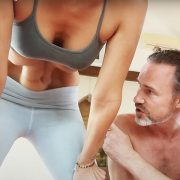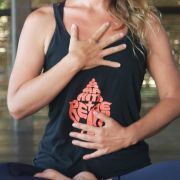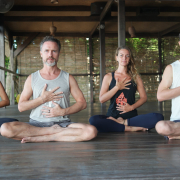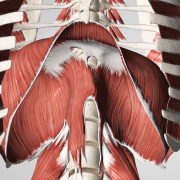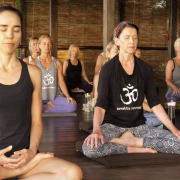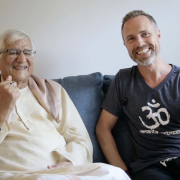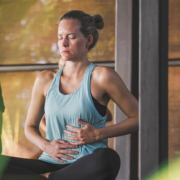 https://samahitaretreat.com/wp-content/uploads/2024/02/basic-breathwork.webp
600
798
Dr. Paul Dallaghan
http://samahitaretreat.com/wp-content/uploads/2024/01/samahita-logo-v2.svg
Dr. Paul Dallaghan2024-02-28 20:34:422024-02-28 20:35:53Navigate the World of Breathing
https://samahitaretreat.com/wp-content/uploads/2024/02/basic-breathwork.webp
600
798
Dr. Paul Dallaghan
http://samahitaretreat.com/wp-content/uploads/2024/01/samahita-logo-v2.svg
Dr. Paul Dallaghan2024-02-28 20:34:422024-02-28 20:35:53Navigate the World of BreathingBreathwork and Savasana: the base of breath and total relaxation
In recent years it has become normal to see exercise as a great regulator of health and even an aid, if not improver, to cognition, how well your brain works. There are numerous studies that now quite conclusively show this. (1) This is great news. Only 100-150 years ago physical activity was considered to leave one dull-minded and it was actually a raised objection by the educated groups, at least in India, to not engage in activities like yoga asanas and other physical force.
From 1920 on Swami Kuvalayananda took it upon himself to bring physical education, with the addition of yoga asanas, into the Indian school curriculum. This was an incredible feat for an ardent nationalist to have been selected by the Britisher government of the day to appoint him to this role in 1932.
Ironically in today’s active, over-worked world we have almost swung the other way, needing to be reminded to literally relax, slow down, learn how to breathe, for not just physical health but to actually realize the best return from your physical activity. In current times of required isolation how many are actually finding the balance between enough activity to stimulate the body and brain and adequate rest to relax the musculature, restore the nervous function, regulate the breath and bring relief, even lightness to the inner emotional world? With so many experiencing a load of stress, even anxiety in these times, it takes its load on brain function and how well you can emotionally process all that’s coming at you in life. One outcome of that stress load alters synapses leading to a disruption in communication between neurons (2).
You need a breathwork plan and a relaxation strategy
Relaxation:
A wonderful pose from the world of yoga that features often as people’s favorite is “savasana”. Strangely it translates as “corpse”, thankfully only as metaphor and an indication of the degree to let go of the body. But not just the body – the mind also. A similarly styled technique became popular and studied in the late 1960s leading researcher and scientist, Dr. Herbert Benson, to name it the “Relaxation Response”, culminating in a book in 1975 (3). In a sense he renamed and repackaged certain meditational techniques and called it by this more popularly acceptable term. Yet it is still not the full practice of savasana. Interestingly in a 2013 study on post-exercise recovery with or without music the researchers found no difference between these conditions and concluded “Relaxing music unaccompanied by meditation techniques or other such interventions may not have a major role in reducing anxiety in certain experimental settings” (4) The point to note here is “unaccompanied by meditation techniques”. Recovery, rest, music, etc. are limited if the mind is not engaged in the equation. We (at Samahita) emphasize this in our effective Brain Health Upgrade program.
This leads us then to:
Relaxation with breath regulation as both meditation technique and body and mind restoration
Earlier than Benson, what is most likely the first validated medical journal publication on “savasana”, was by Dr. Datey M.D, head of Cardiology at K.E.M. Hospital Bombay, and Dr. Vinekar of the Kaivalyadham, the chief researcher under Swami Kuvalayananda, published in the journal Angiology (5) in 1969 (but presented at The Joint Annual Meeting of the American College of Angiology and International College of Angiology, Las Vegas, 1967). It detailed empirical results to show the positive effects of this real level of relaxation on reducing hypertension. Yet Swami Kuvalayananda himself was the first to write about and detail savasana and breath regulation in his journal Yoga Mimamsa back in 1926. Some of his great work inspires the information in this article.
Our informed approach follows these two arms:
A. Savasana: complete relaxation of the entire body – a constructive effort to allow the different bodily tissues to relax coupled with a continued concentration on the same relaxed bodily tissues
B. Breath Regulation: exclusive attention to the breath – while maintaining the degree of bodily relaxation achieved in A above, a rhythm to the flow of breath is developed through a combined focus on the breath while remaining in this relaxed bodily position
The exercise is then developed across a few steps over time:
- Lay down on your back, legs at about 30 degrees apart, arms about 45 degrees away from the sides of the body. Allow up to a minute to settle your body into its laying position.
- Observe your breath. Do not attempt to control the breath, neither the amount of air taken in or out nor in the length of the breath in or out. It is free. Your breath has its own way (side note: to observe and not control could have impacts on other parts of your life as a consequence). If you submit to the wandering of the mind all you are doing is laying your body down with your mind disconnected, effectively missing the double effect and purpose of this (meditational technique) practice – rhythm and relaxation. This step alone can be the main focus, growing from 3 to 10 minutes over a 2-week period.
- Discovery of breath rhythm. If you faithfully follow step 2 for 2-weeks, just laying and mindfully observing your breath you will discover your unchecked breath is uneven and irregular, across volume and length of inhales and exhales. It is worth taking the time to only do step 2 in order to learn something about your own physiology. You may discover that this lack of uniformity in your breathing is behind many minor (perhaps major) ills you experience. It needs, it deserves improvement.
- Breath improvement through regulation. Contrary to some of our seated breathwork practices, we first attempt to make the length of inhale and exhale even. This requires you to lengthen the shorter breath and shorten the longer breath. No effort should be made to increase the volume of each respiration, however. A rhythmical flow is all that is wanted. Additionally, the length is not forced but rather you arrive at natural length that you have regulated and made even. Ideally give yourself 10 to 15 minutes for this everyday (typical response: shock, 10 minutes is a lot to do nothing – reply: you are not doing nothing. Instead you are doing something extremely valuable and critical, it is minute and right into the very essence of life itself, your entire biological rhythm. This will affect your entire day, how you feel, how you breathe, how you process emotions, how you deal with those close to you, how you make decisions. But it needs your investment, which means your intelligence to spot its absolute value in the depth and quality of your life).
- Breath expansion. Continue step 4 for a month before taking on this step. (yes, these appear to be really simple exercises but staying mentally in them is not so easy. Further, it is not about how much more you can do, it is about giving it the time to do its real work across your own physiology. You cannot force or rush that. Actually if you try to you literally undo the entire exercise. So let it happen. Patience and diligence). Now your breath is regulated, inhale exhale even, so you only increase the volume of each inhale and exhale. This makes the breath a little more controlled as you draw in more breath and proportionally let it out across the designated time. Breath should be smooth and slow, never forced, jerky or violent. Mind continues to be concentrated on the moving breath. This 15-minute routine now becomes your relaxation and breath regulation practice.
- Optional continuation – you can choose to sit up and follow one of the other detailed breathwork practices such as a 10-minute Quadrangular Breath practice, or the routine detailed in Breath for Stress and Anxiety.
A final note from Swami Kuvalayananda on these exercises as he wrote in 1926:
“The practice of rhythmical breathing is not as easy as it looks to be at the first sight. The most difficult part of it is concentration. Patient work, however, must enable a student to achieve success. There should be no hurry in going through the successive stages. The second stage [Breath improvement through regulation] should not be begun unless and until one has mastered the first [Observe your breath]. The same is true about the third [Breath expansion] and the second stage.”
May you enjoy tremendous well-being through mastering the art of relaxation and regulating your breath in the process – one cannot be had without the other.
References
- Sebastian Ludyga, Markus Gerber, Uwe Pühse, Vera N. Looser, Keita Kamijo. Systematic review and meta-analysis investigating moderators of long-term effects of exercise on cognition in healthy individuals. Nature Human Behaviour, 2020; DOI: 10.1038/s41562-020-0851-8
https://www.nature.com/articles/s41562-020-0851-8 - Christian Luis Bender, Xingxing Sun, Muhammad Farooq, Qian Yang, Caroline Davison, Matthieu Maroteaux, Yi-shuian Huang, Yoshihiro Ishikawa, Siqiong June Liu. Emotional stress induces structural plasticity in Bergmann glial cells via an AC5-CPEB3-GluA1 pathway. The Journal of Neuroscience, 2020; JN-RM-0013-19 DOI: 10.1523/JNEUROSCI.0013-19.2020
https://www.jneurosci.org/content/early/2020/03/27/JNEUROSCI.0013-19.2020 - Benson, H., & Klipper, M. Z. (1975). The relaxation response: A simple meditative technique that has helped millions to cope with fatigue, anxiety and stress. New York: Avon Books.
https://www.psychologytoday.com/us/blog/heart-and-soul-healing/201303/dr-herbert-benson-s-relaxation-response - Tan, F., Tengah, A., Nee, L. Y., & Fredericks, S. (2014). A study of the effect of relaxing music on heart rate recovery after exercise among healthy students. Complement Ther Clin Pract, 20(2), 114-117. doi:10.1016/j.ctcp.2014.01.001
https://www.ncbi.nlm.nih.gov/pubmed/24767956 - Datey (1969) Angiology vol. 20: Shavasan-Yogic exercise in the management of hypertension
https://journals.sagepub.com/loi/anga
Dr. Paul Dallaghan’s expertise with breathwork, body and meditative practices comes from three sources: (1) three decades of daily dedicated practice and teaching these techniques; (2) uniquely acknowledged in the Yoga tradition by the title of “Master Yogi-Prānācharya (expert in breath)”, following an immersion in the original culture through one-on-one direct training in practice and study of ancient texts; (3) a PhD in doctoral scientific research at a leading US university (Emory) covering both the tradition and science of yoga and breath practices in terms of stress, health and aging. As a result, Paul occupies a unique space to impart genuine teaching and science on the breath, body, and meditative practices, seen as a Teacher-of-teachers and identified to carry on the tradition of Pranayama. His sincere and ongoing role is to teach, write and research, to help put out experienced and authentic information on these areas of how we live, breathe and be, to help people improve their mental and physical health, and live more fulfilling lives.
For more on his background see his bio
More from the Samahita Blog

